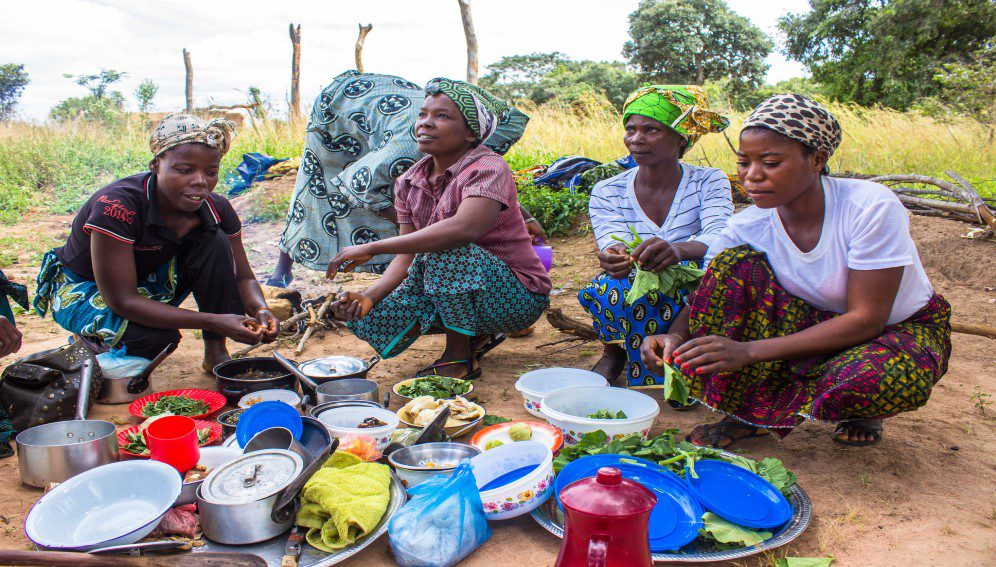To protect our food supply and prevent malnutrition in the face of climate change, the degradation of our planet, and diseases such as COVID-19, researchers from Israel and the United Kingdom have released a new report detailing how we need “radical changes to the food system”.
In particular, the researchers say that we need to produce more “novel foods”. An earlier study identified examples of such foods as cultured meat, black soldier fly larvae, spirulina, sugar kelp, and mussels that can be produced on a large scale with minimal production costs and less damage to the environment.
As a food scientist, these are issues I think about every day. I agree that producing novel foods should be integrated into the food system to reduce vulnerability to a warmer planet, drought, changing rain patterns, pests and diseases.
“To ensure that novel foods nourish communities and combat malnutrition, we need policies and outreach efforts that make them affordable.”
Mercy Lung’aho, International Institute for Tropical Agriculture
That would be the case if we define food as any safe substance that has nutrients that people eat or drink to maintain life and growth. But on the other hand, I recognise that introducing novel foods cannot be done in isolation.
Culture is key
Indeed, as highlighted in a study on food and language, all too often what is missed when talking about the foods of the future is the fact that food in many communities is part of culture.
It is plausible that people may be suspicious of new foods because they are used to the foods they already eat. How food is grown, prepared and eaten is often influenced by attitudes, beliefs, taboos, and practices that have been passed on from generations. Food is more than just what we eat.
It is often linked to our ethnicity, cultural heritage and is a form of communication with ourselves, within our families and communities. We may give ourselves a treat when we are happy, we prepare different foods to honour family traditions, or when celebrating our culture and community. There are foods we may never try because our religion or culture may forbid them.
Food taboos can influence what new things we will eat. In Western Kenya, certain foods such as chicken gizzard are forbidden for women as they are reserved for men. In Sub-Saharan Africa, pregnant women are forbidden from eating protein rich foods such as eggs and snails for several reasons including the fear that the child may develop bad habits.
An important consideration in making dietary changes is safety. What would be your first question when introduced to a new food? Would you want to know if it is safe to eat? Because I have multiple food allergies, I always ask what is in a food before I eat it.
The rise in food allergies has been particularly noticeable in recent decades, leading to an untimely death in some cases. We have also seen a rise in allergy warnings to food labels and on restaurant menus to ensure clear labels for allergenic foods. We need research and evidence that would ensure future foods are safe for all.
Future foods must be affordable
Further, ‘future foods’ can only combat malnutrition if they are affordable. It is well known that eating two servings of fruits and three servings of vegetables per day can improve our health. However, the consumption of fruit and vegetables is low worldwide, particularly in low-income countries such as Zimbabwe because families cannot afford them.
In many African countries such as Ethiopia, Ghana, Malawi and Tanzania, many low-income families struggle to afford healthy diets, even in their cheapest form. We need policies worldwide that would ensure future foods are both available and affordable to all.
In some cases, it is not enough for food to get to the table. It must be equitably distributed. So, looking at how food is allocated between members of a family is important. In some cultures, men eat before women and children. And boys may eat before girls. Who benefits more when there is novel food in the household? It depends.
“Food is more than just what we eat. It is often linked to our ethnicity, cultural heritage, and is a form of communication with ourselves.”
Mercy Lung’aho, International Institute for Tropical Agriculture
But if women cook, serve food to the men and children first, and get to eat at the end when everyone else has had their fill, not everyone benefits equally. Community education and socio-behavioural change communication to give equal priority to the nutrition of all family members are key.
Policies and outreach efforts needed
To be sure, the world must change what we eat, how much we eat, how much is wasted and how food is produced to save the planet and ensure the survival of the human race. The future foods for healthier people and a healthier planet will include foods that are familiar, some not so familiar.
This piece was produced by SciDev.Net’s Sub-Saharan Africa English desk.

